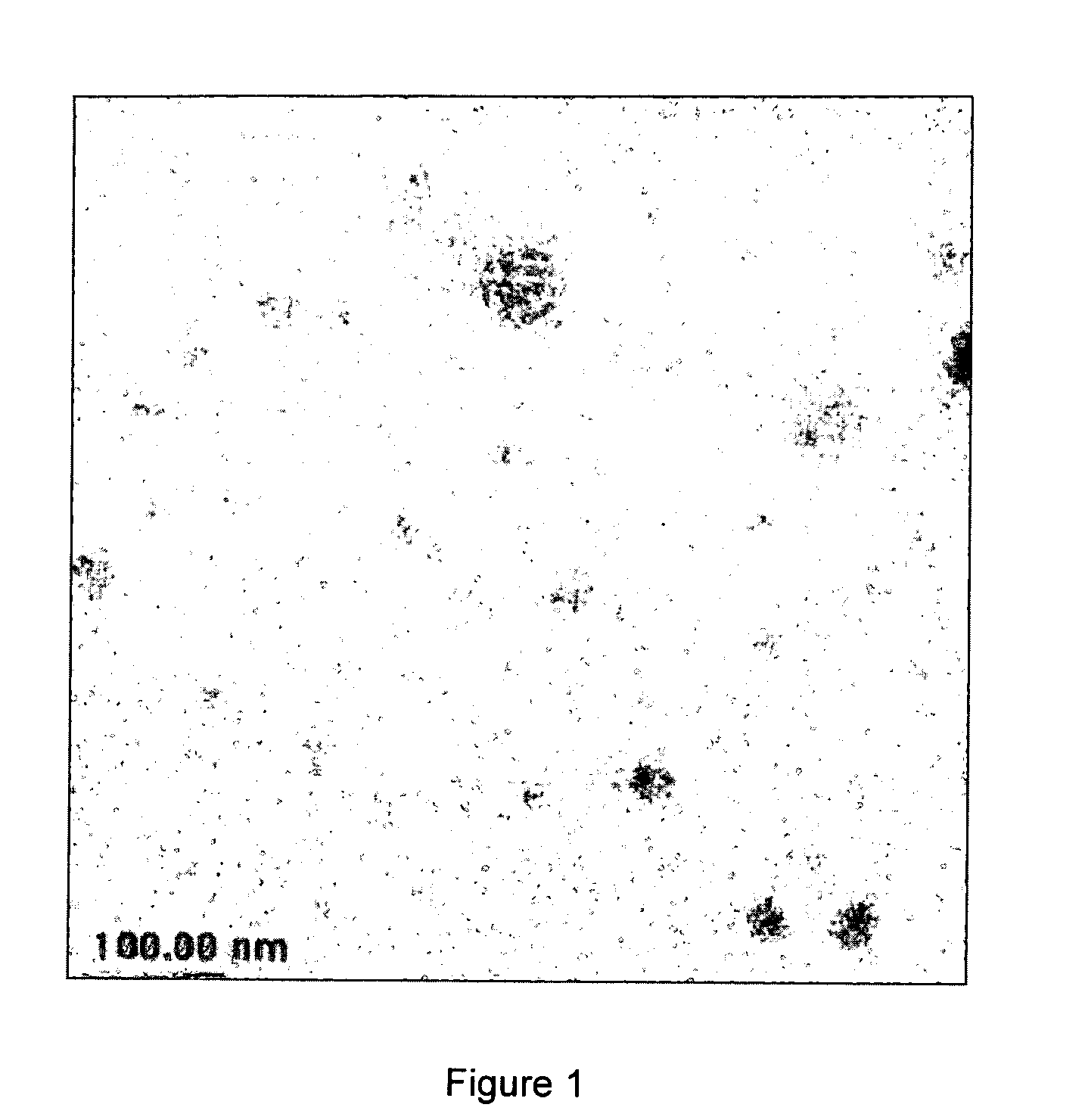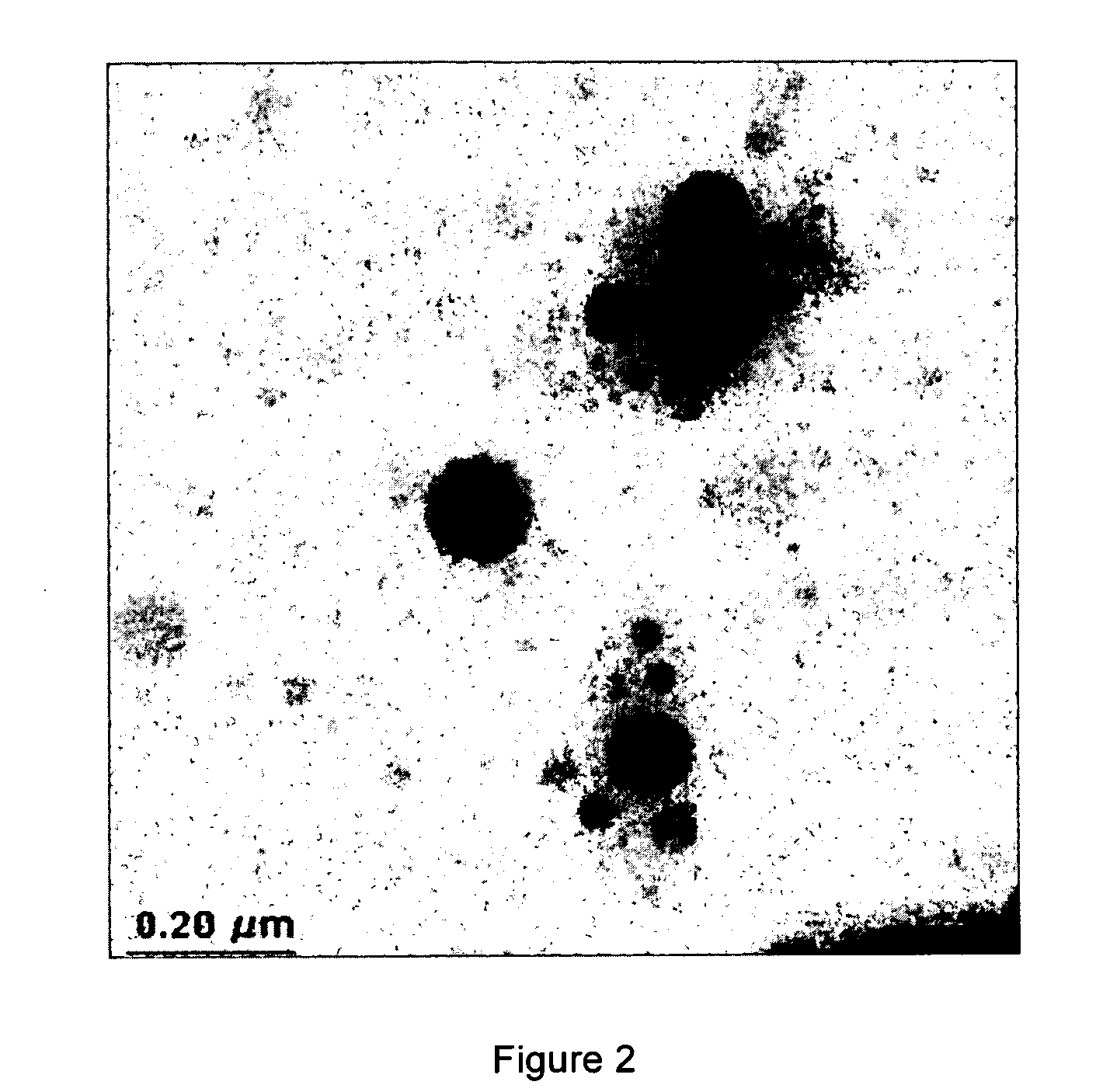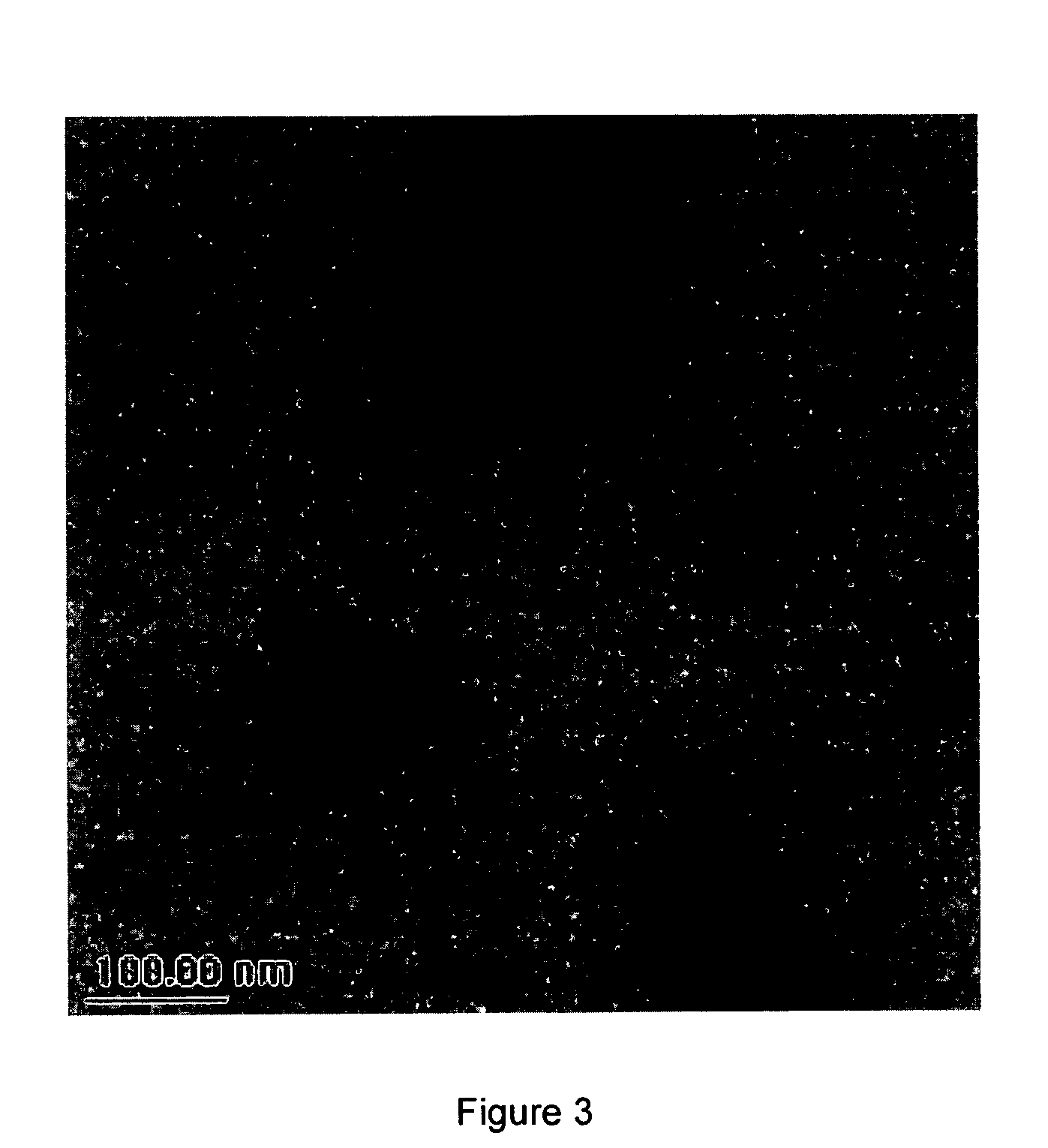Polymer nano-particle with polar core and method for manufacturing same
a technology of polar core and polymer nano-particles, applied in the field of nano-particles, can solve the problems of poor nano-particle formation, negative impact, and notoriously difficult preparation of some polymer nano-particles, and achieve the effect of improving the quality of nano-particles
- Summary
- Abstract
- Description
- Claims
- Application Information
AI Technical Summary
Problems solved by technology
Method used
Image
Examples
example 1
[0058] A 2-gallon reactor was used for preparation of polybutadiene. 5.30 lbs of hexane was charged into the reactor and the reactor was vented. 4.57 lbs butadiene / hexane blend (21.8 wt % butadiene)was charged into the reactor. The temperature of the mixture was set to 122 F. When the temperature stabilized (all of the thermal sensors in the reactor reached a constant value) at 122 F, 0.45 ml OOPS (1.6M) solution was charged into the reactor. Subsequently, 5.4 ml BuLi (1.64M) solution was charged into the reactor. The reaction then proceeded for 5 hours until 100% conversion.
[0059] The resultant product was anionic living. A portion of the living polymer was terminated by adding isopropanol to the reactor. After termination with isopropanol, the GPC analysis, using PS as the standard, showed the molecular weight of the polybutadiene: Mn=53800, Mw=58420, Mp=58380, and Mw / Mn=1.085.
example 2
[0060] 300 ml of the living polybutadiene (made in Example 1) was charged into a dry 1.5 L vessel. The vessel was then placed in a dry ice bath. After two hours of cooling, the temperature of the reaction mixture was −78° C. 20 ml of 2-VP was added to the content of the vessel. After one-hour reaction, 10 ml of DVB was added to the vessel. The vessel was then allowed to slowly warm up to room temperature of 23° C. After 1.5 hour reaction, the solution in the vessel turned into a red jelly-like material. The material in the vessel was then terminated with 0.5 ml isopropanol. The material was then taken out and dried under vacuum. GPC analysis showed that the resultant material contains about 50% of micellar particles. The impurity came from the unreacted polybutadiene. The material was dissolved in THF. The particles can be precipitated out using Hexane. H-NMR analysis showed that the particles contained 80% of 2-VP by weight.
examples 3 , 4 and 5
Examples 3, 4 and 5
[0061] For examples 3, 4, and 5, the same procedure as described in Example 2 was used, and the amounts of reactants used are listed in the following table:
Example 2Example 3Example 4Example 5BD solution used300 ml 300 ml 300 ml 300 ml 2-VP20 ml25 ml30 ml35 mlDVB10 ml12 ml15 ml20 mlProductMn289200287700356990409220Mw424840404160572590695430Mp410470429390682450739792Mw / Mn1.471.401.601.70
[0062]FIG. 1 presents an overall view of a particular sample of Example 2. FIGS. 2 and 3 show some details in the TEM pictures of the sample of Example 2. The distribution of size of the particles was broad, ranging from 120 to 5 nm.
PUM
| Property | Measurement | Unit |
|---|---|---|
| Temperature | aaaaa | aaaaa |
| Fraction | aaaaa | aaaaa |
| Fraction | aaaaa | aaaaa |
Abstract
Description
Claims
Application Information
 Login to View More
Login to View More - R&D
- Intellectual Property
- Life Sciences
- Materials
- Tech Scout
- Unparalleled Data Quality
- Higher Quality Content
- 60% Fewer Hallucinations
Browse by: Latest US Patents, China's latest patents, Technical Efficacy Thesaurus, Application Domain, Technology Topic, Popular Technical Reports.
© 2025 PatSnap. All rights reserved.Legal|Privacy policy|Modern Slavery Act Transparency Statement|Sitemap|About US| Contact US: help@patsnap.com



